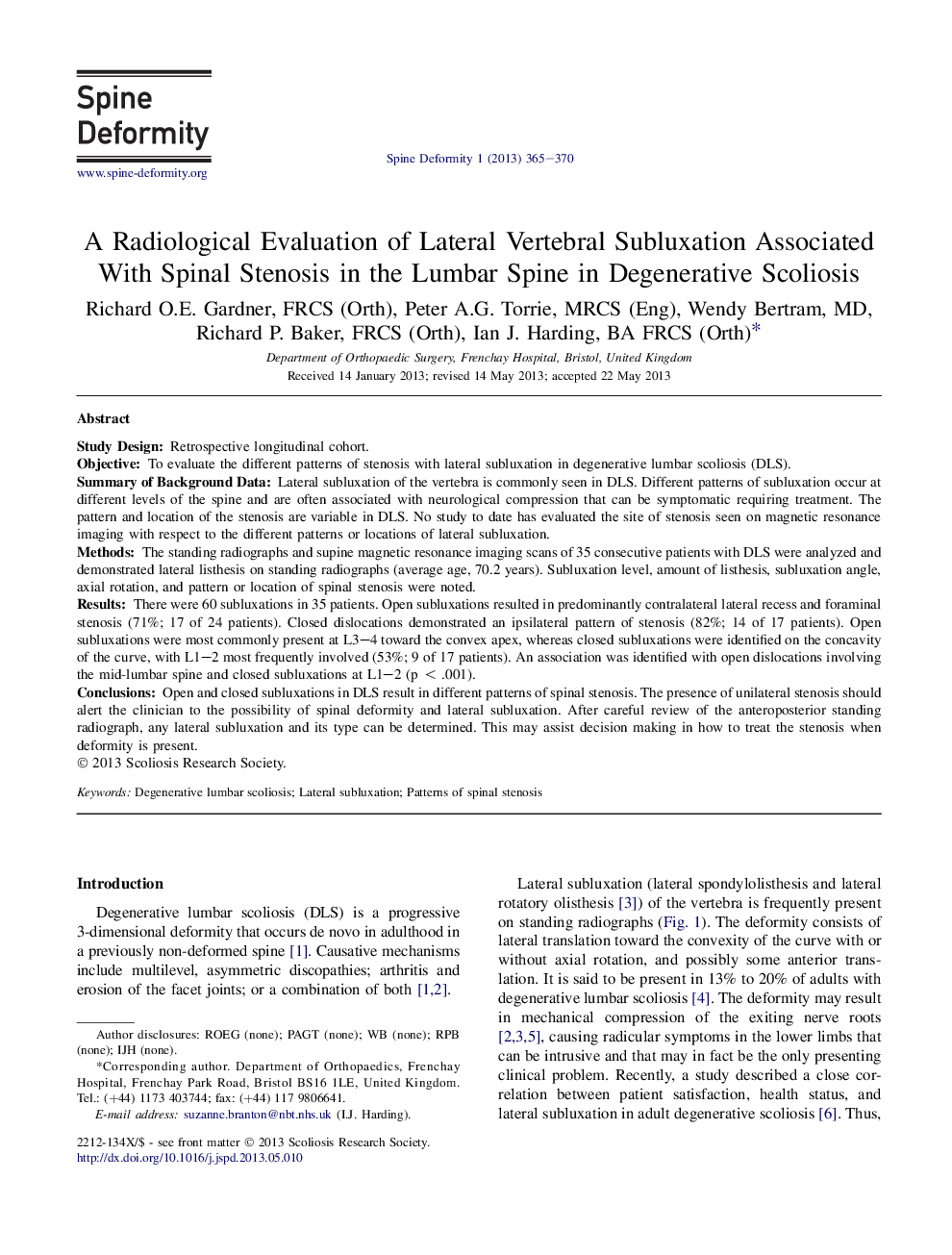| Article ID | Journal | Published Year | Pages | File Type |
|---|---|---|---|---|
| 4095522 | Spine Deformity | 2013 | 6 Pages |
Study DesignRetrospective longitudinal cohort.ObjectiveTo evaluate the different patterns of stenosis with lateral subluxation in degenerative lumbar scoliosis (DLS).Summary of Background DataLateral subluxation of the vertebra is commonly seen in DLS. Different patterns of subluxation occur at different levels of the spine and are often associated with neurological compression that can be symptomatic requiring treatment. The pattern and location of the stenosis are variable in DLS. No study to date has evaluated the site of stenosis seen on magnetic resonance imaging with respect to the different patterns or locations of lateral subluxation.MethodsThe standing radiographs and supine magnetic resonance imaging scans of 35 consecutive patients with DLS were analyzed and demonstrated lateral listhesis on standing radiographs (average age, 70.2 years). Subluxation level, amount of listhesis, subluxation angle, axial rotation, and pattern or location of spinal stenosis were noted.ResultsThere were 60 subluxations in 35 patients. Open subluxations resulted in predominantly contralateral lateral recess and foraminal stenosis (71%; 17 of 24 patients). Closed dislocations demonstrated an ipsilateral pattern of stenosis (82%; 14 of 17 patients). Open subluxations were most commonly present at L3–4 toward the convex apex, whereas closed subluxations were identified on the concavity of the curve, with L1–2 most frequently involved (53%; 9 of 17 patients). An association was identified with open dislocations involving the mid-lumbar spine and closed subluxations at L1–2 (p < .001).ConclusionsOpen and closed subluxations in DLS result in different patterns of spinal stenosis. The presence of unilateral stenosis should alert the clinician to the possibility of spinal deformity and lateral subluxation. After careful review of the anteroposterior standing radiograph, any lateral subluxation and its type can be determined. This may assist decision making in how to treat the stenosis when deformity is present.
